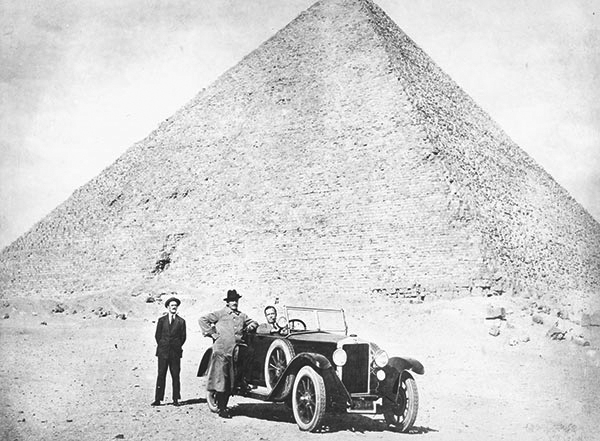The Horch 10/50 PS of 1924 was the first design undertaken by Paul Daimler for Horchwerke AG in Zwickau. Arnold Zoller’s original 35-hp engine was boosted to yield 50 horsepower (by conceptual weight-saving measures) and the car was designed to satisfy higher standards of ride quality. Daimler’s version of the light alloy engine had an overhead camshaft driven by a bevel gear shaft, steel cylinder liners and aluminium pistons. These features not only reduced its weight but also made it an extremely smooth, quiet runner.
This was the first model to carry the new Horch emblem, an “H” with the name above it in the form of a crown, on the radiator. But there were other innovations as well. In close cooperation with the Argus aircraft engine company, which had acquired a majority holding in Horch in 1920, a principle already introduced in the aircraft industry was adopted: the engine, gearbox, steering, controls and instrument dials are grouped together to form an easily installed module (modular-element weight saving).
An interesting feature is the use of Silumin, an extremely strong silicon-aluminium alloy. The gearbox casing, crankcase, footwell bulkhead and even the instrument panel trim are made from this lightweight material (weight-saving patterns and material). The car’s body uses wood for the frame and panelling. Although borrowed from classic coachbuilding, this was a lightweight construction method by contemporary standards. The firewall is a particularly interesting design, with the steering box cast directly into it (integral construction principle).

Technical data
| Engine | 4-cylinder inline | ||||||||
| Capacity | 2,612 cc | ||||||||
| Power | 50 hp at 2,800 rpm | ||||||||
| Transmission | Rear-wheel drive | ||||||||
| Dimensions |
|
||||||||
| Gewicht | 1,850 kg | ||||||||
| Top speed | 95 km/h | ||||||||
| Price | 12,875 Reichsmarks | ||||||||
| Manufacture period | 1924 – 1926 | ||||||||
| Units produced | 2,330 |